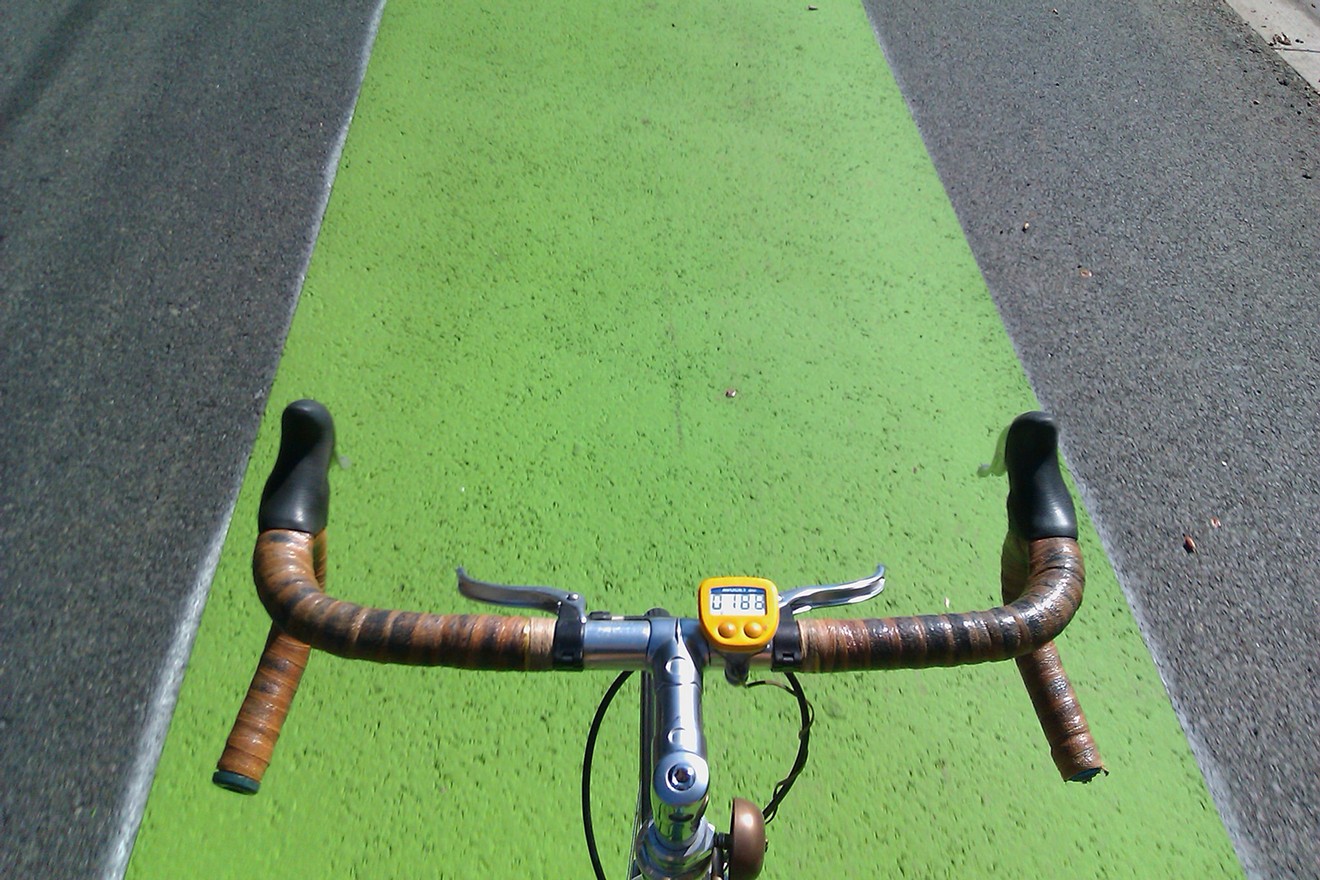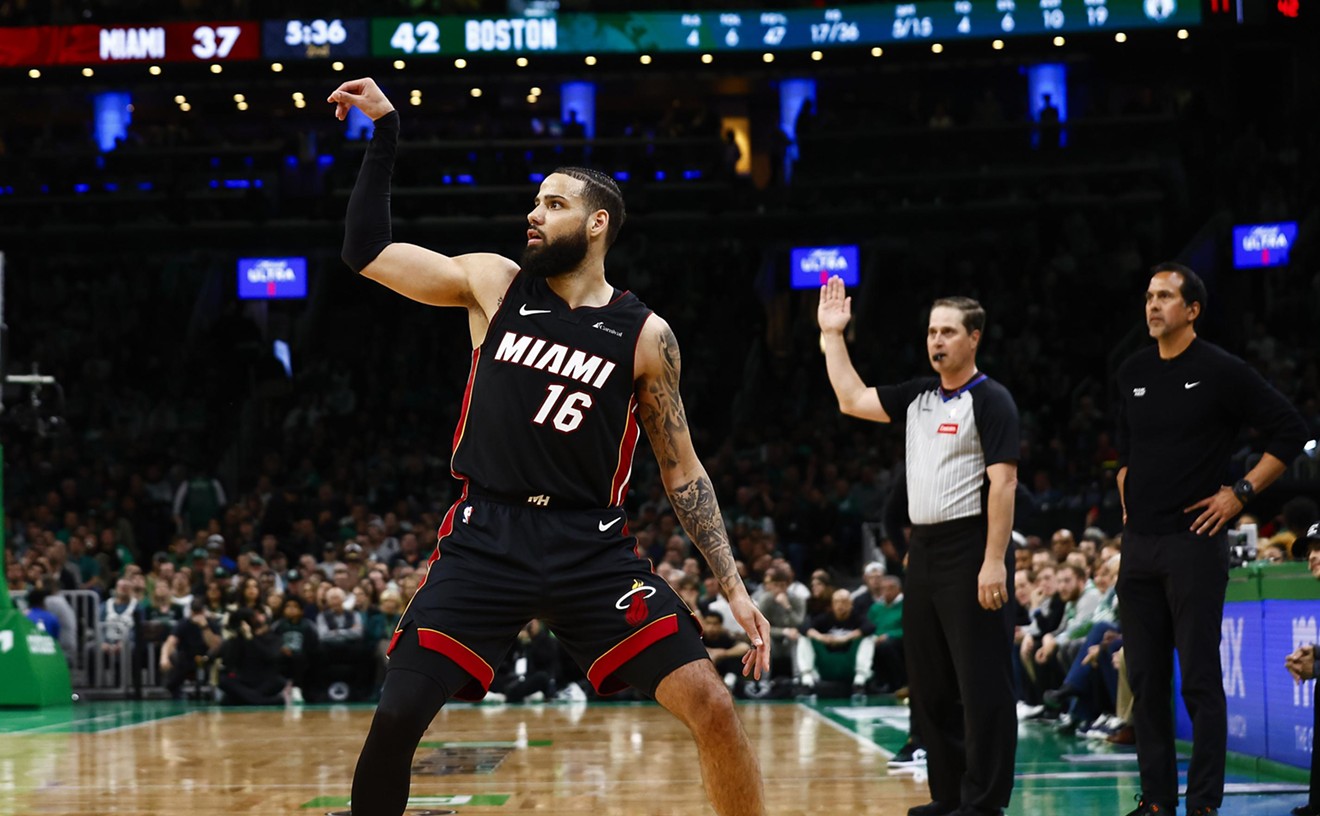On the Venetian Causeway, a ghost bike that's been painted white marks the spot where a driver fatally struck cyclist Flavia Carnicelli last year.
"It's a reminder for everyone cycling by that someone lost their life there," says Azhar Chougle, executive director of Transit Alliance Miami, an organization that advocates for public transit improvements.
Born in Brazil, Carnicelli moved to Miami Beach in 2016 to help friend Carmen Rodriguez open a Brazilian restaurant. Every weekend, Rodriguez now visits the crash site and leaves flowers for her friend of nearly 20 years.
"She loved biking around Miami Beach," Rodriguez says of Carnicelli. "She did everything on her bike. I know that she felt safe and happy cycling around the city, and she would never imagine that something like this would happen to her."
Florida has long been — and, much to the distress of riders and advocates, continues to be — a notoriously deadly state for bicyclists.
The Venetian Causeway, one of Miami's most popular bike routes, sees some 1,500 cyclists every day, according to Transit Alliance. It's the primary route for cyclists and pedestrians between the cities of Miami and Miami Beach. Because of the road's popularity, the organization's members want protected bike lanes for the 2.8-mile stretch of road, and they'll make their case at a meeting of the Miami Beach Neighborhood and Quality of Life Committee today at 10 a.m.
The "Safer Venetian Causeway" campaign is in honor of Carnicelli, the members say.
"The tragedy is not only that Flavia died," Chougle tells New Times. "The tragedy is that her death did not result in any action. We can't have a situation where a cyclist loses her life, it's preventable, and there's no mobilization to fix the problem."
The causeway falls under the jurisdiction of Miami-Dade County, but the western half runs through the city of Miami and the eastern half through the city of Miami Beach. Over the years, traffic on the Venetian has increased because of congestion on the MacArthur and Julia Tuttle Causeways, a Miami Beach memo says. A 2019 survey of Miami Beach residents shows that 47 percent of respondents had a household member who regularly rides a bike, but 37 percent of respondents said they felt unsafe riding bikes in the city.
Advocates say the bicycle lanes are unprotected and largely unsafe. In 2018, the Venetian saw a bit of a safety upgrade in the form of green bike lanes to give cyclists a designed spot on the road. Chougle says the green lanes were a sign of progress at the time, but it takes more than green paint for cyclists to feel and be safe.
"When you have a bike lane that's completely unprotected, you're always on guard," he says. "You're always very conscious about someone coming from behind you and not paying attention to the road, or speeding or driving aggressively. And nothing separates you from them."
Chougle acknowledges the advocates of Transit Alliance aren't engineers or experts on transportation infrastructure, so they're not advocating for any particular form of protection. Their role, he says, is to bring together local governments that share a problem so they can arrive at a solution.
"This speaks to the larger dysfunction of Miami," Chougle says. "In order to get something done, you need to collaborate with everyone, and often these entities don't work together or talk to each other on their own."
Miami Beach Commissioner Mark Samuelian and Miami Commissioner Ken Russell are sponsoring changes in their respective cities. Samuelian says he wants to discuss a two-part solution at the committee meeting — a quick, short-term fix to address concerns and a permanent fix that will involve collaboration among multiple agencies.
"This is a public safety issue, and we would like to see something implemented as soon as feasible," Samuelian says.
The Miami Beach memo about protected bike lanes also says the county was open to using delineators on the Rickenbacker Causeway but had concerns about the narrow lanes.
"The county specifically cited concerns with motorists driving closer to the center line of the road (to avoid hitting the delineators) and a potential increase in head-on collision on the bridges," the memo reads.
Miami Beach staff has proposed audible or vibrating pavement markings and "raised pavement markings" along the edge of the bike lanes.
Whatever comes of the campaign, Rodriguez says she's amazed by the support.
"When [Carnicelli] passed, we thought that we needed to do something for her death to mean something — to prevent these terrible accidents from happening to someone else," Rodriguez says.
[
{
"name": "Air - MediumRectangle - Inline Content - Mobile Display Size",
"component": "19274298",
"insertPoint": "2",
"requiredCountToDisplay": "2"
},{
"name": "Editor Picks",
"component": "17482312",
"insertPoint": "4",
"requiredCountToDisplay": "1"
},{
"name": "Inline Links",
"component": "18711090",
"insertPoint": "8th",
"startingPoint": 8,
"requiredCountToDisplay": "7",
"maxInsertions": 25
},{
"name": "Air - MediumRectangle - Combo - Inline Content",
"component": "17482310",
"insertPoint": "8th",
"startingPoint": 8,
"requiredCountToDisplay": "7",
"maxInsertions": 25
},{
"name": "Inline Links",
"component": "18711090",
"insertPoint": "8th",
"startingPoint": 12,
"requiredCountToDisplay": "11",
"maxInsertions": 25
},{
"name": "Air - Leaderboard Tower - Combo - Inline Content",
"component": "17482313",
"insertPoint": "8th",
"startingPoint": 12,
"requiredCountToDisplay": "11",
"maxInsertions": 25
}
]












